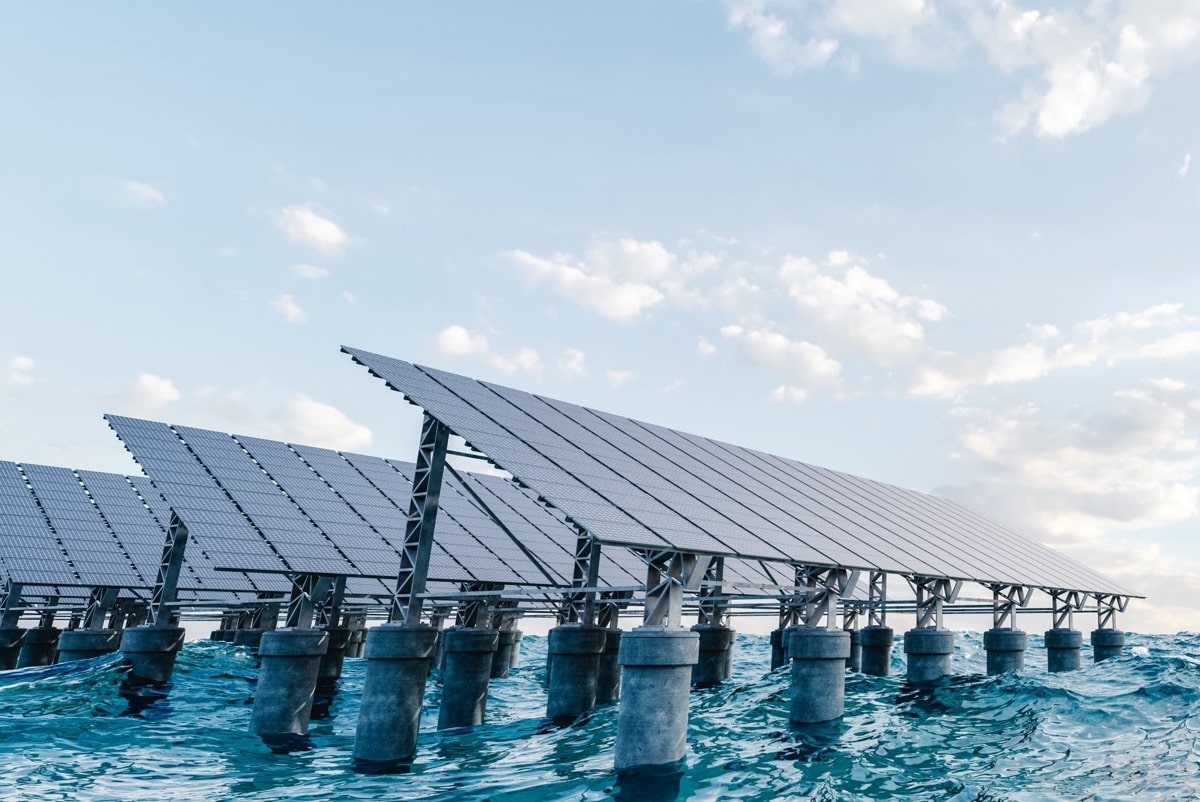Green energy is gaining traction, as numerous government and private initiatives vow to boost renewable energy transition across the globe. What does 2024 have in store for the renewable energy market? Let’s look at the most vivid tendencies and trends that will shape the industry this year.

Renewable energy has been in the spotlight of public focus ever since humankind realised that global fossil fuel stocks are not endless. Moreover, natural resources like solar, wind, hydroelectric, biomass, and geothermal power can perform the same functions as coal or oil without causing global warming effects.
Therefore, decision-makers all over the world are doing their best to implement renewables into their local energy systems as the dominant energy source. Although these efforts end up with different results, the overall tendency is a gradual shift to greener and cleaner energy practices and solutions.
The International Energy Agency (IEA) has estimated that the global renewable electricity capacity additions reached an estimated 507 GW in 2023, almost 50% higher than in 2022. Besides the obvious recorded acceleration in renewable energy adoption, the institution sees all the conditions for even more positive results over the next five years.
By 2028, potential renewable electricity generation is expected to grow by almost 70% compared to 2022, reaching 14,430 TWh. The agency estimates that variable renewable generation will first surpass hydropower, then coal-fired electricity generation and nuclear energy use.
Here are the main trends that will shape the renewable energy market in the near future.
China Comes to the Forefront of Renewables Adoption
According to the IEA, China’s renewable electricity capacity will grow threefold in the next five years compared with the previous five-year term. By rough estimations, the country will be accounting for an unprecedented 56% of global expansion.
Already in 2023, worldwide acceleration was mainly driven by year-on-year expansion of the booming Chinese market for solar PV (+116%) and wind (+66%). Generation costs of these two renewable energy types are relatively low. That is why China, with its locally manufactured equipment and low-cost financing, is expected to deploy almost four times more renewable capacity than the European Union and five times more than the United States over 2023-2028.
The Chinese government provides enough support to local renewable energy players guided by ‘Net Zero by 2060’ target, as well as incentives under the 14th Five-Year Plan (2021-2025).
Decentralisation Becomes More Common in Energy Supply Infrastructure
As opposed to the centralised power generation, where energy is produced in large, often distant facilities and transmitted over long distances, decentralised energy infrastructure promises the benefits of energy independence and a shield against the volatility of fossil fuel pricing.
Recent advancements in renewable energy technologies, energy storage, and smart grid systems enable new ways of energy supply and distribution. Great examples are community solar projects and residential solar panels, small-scale on-site wind turbines, battery storage, community microgrids, peer-to-peer energy trading platforms based on blockchain technology, renewable energy crowdfunding solutions, and dedicated blockchain-based DAOs.
Distributed energy storage systems (DESS), including lightweight solid-state batteries, help energy providers to generate and store energy in a decentralised way and avoid production irregularities.
Future trends in renewable energy all point towards energy decentralisation. Moreover, it is likely to be based on hybrid microgrids combining solar, thermal, hydro, wind, and even clean hydrogen energy sources.
This paradigm shift empowers individuals, businesses, and municipalities to satisfy their own energy needs in the most sustainable and efficient way, without dependence on harmful fossil fuels and global economic or political changes.
Technology Drives Innovation in Renewable Energy Sector
The most sustainable energy solutions in 2024 are likely to be empowered by innovative modern technologies like artificial intelligence (AI), blockchain, advanced robotics, and more.
Blockchain expanded opportunities in the renewables sector with peer-to-peer (P2P) electricity trading. In this trading model, individuals, businesses, or even communities can buy and sell electricity directly to one another through a decentralised platform without the need for an intermediary, such as a traditional utility company.
While blockchain technology ensures the security and transparency of P2P transactions via an immutable and decentralised ledger, smart meters and sensors can measure the amount of generated and consumed electricity in real time.
Incorporating robotics into the energy industry, helps providers optimise energy resources and manage their contributions to the grid more efficiently. In addition, drones can be used for site inspections, and checking on the conditions of power lines, wind turbines, and other energy infrastructure. In confined spaces such as pipelines and storage tanks, robotic crawlers are used instead of drones to detect defects and conduct routine maintenance. This way, energy infrastructure can be inspected without putting human workers at risk.
Finally, artificial intelligence and big data enable energy production efficiency and predictive maintenance, as well as facilitate decision-making with well-grounded insights. Grid analytics and management are the key areas where AI can be leveraged to provide a consistent and optimised electricity flow.
As a subtype of artificial intelligence, generative AI is powering new tools for developers to assess community sentiment toward renewables. It also helps automate site choices, determining the best locations for renewable energy installations upon analysis of wind patterns, solar exposure, and environmental impact. AI tools can even suggest the best solar panel layout to maximise generation and design the most efficient blades with peak aerodynamics for wind.
Solar Gains Remarkable Growth, Wind Remains Strong
IEA predicts that solar PV and wind additions will more than double by 2028 compared with 2022, potentially reaching almost 710 GW. Their generation costs are lower than both fossil and non-fossil alternatives in most countries and governmental policies mostly support these most popular renewables.
Recent advances in wind turbine technology, such as larger and more efficient turbines, floating wind farms, layout and landscape optimisation, made wind power one of the most promising renewable energy sources.
However, wind energy production faces a few challenges. One of them is uncertainty about the influence of climate change. Some experts believe that rising heat and changing weather conditions may create more wind droughts – extended periods when the wind speed drops. In addition, countries like the U.S. register lower wind investments due to higher costs and permitting challenges such as increase in local and state restrictions and contestations of renewable projects.
Therefore, solar power is even more rapidly developing. Solar energy investments have been surging lately. The segment funding grew 36% in 2022, and skyrocketed to $358 billion in H1 2023, a 22% rise compared to the first half of 2022 and an all-time high for any six-month period. In 2023, solar PV alone accounted for three-quarters of renewable capacity additions worldwide. By IEA estimates, in 2028, solar PV will surpass wind electricity generation.
The momentum of large-scale solar installations, including utility-scale solar farms and parks, is expected to continue, boosted by decreasing costs and enhanced efficiency of solar panels. Despite increases in investment costs caused by rising commodity prices, utility-scale solar PV remains the most affordable option for new electricity generation in most countries.
Solar energy is becoming more popular, particularly in regions with high insolation levels and many sunny days yearly. In many such places like Nevada (USA), professionals assist homeowners and businesses in understanding and implementing modern solar installations. For example, the evolving solar market can be seen in the work of trusted solar experts serving Reno residents.

Grid Integration Technologies Play a Crucial Role In Optimising The Energy Sector
Grid integration technologies enable the efficient integration of renewable energy sources, improve grid reliability, reduce transmission losses, and support the transition to a more sustainable and resilient energy system.
Key grid integration technologies include Advanced Metering Infrastructure (AMI), high-speed communication networks, battery storage, pumped hydroelectricity storage, advanced forecasting and automated demand response systems, V2G, microgrids, SCADA (Supervisory Control and Data Acquisition) systems, High-Voltage Direct Current (HVDC) transmission, Phasor Measurement Units (PMUs), grid cybersecurity solutions, and more.
Advanced forecasting, energy storage, and demand response systems contribute to the smooth integration of off-grid sources such as biofuels, wind, and hydropower into the grid. Innovative smart grid technologies also have real-time monitoring and control capabilities, enabling demand response initiatives. These features help balance supply and demand, reduce peak loads, and enhance grid stability.
Moreover, grid integration technologies enable the development of microgrids. These localised, self-contained energy systems can either operate independently or be connected to the main grid. In any case, they provide resilience during outages and support community-based renewable energy initiatives.
By integrating electric vehicles into the grid, Vehicle-to-Grid (V2G) technology allows EVs to not only consume electricity but also return excess energy to the grid during peak times. The integration brings mutual benefits to both the energy and transportation industries.
As the energy sector continues to undergo rapid transformation towards more sustainable practices, the continued development and deployment of grid integration technologies make energy systems capable of accommodating diverse energy sources and evolving consumer needs.









